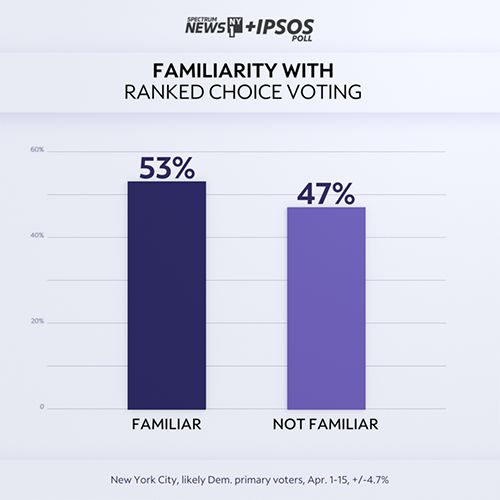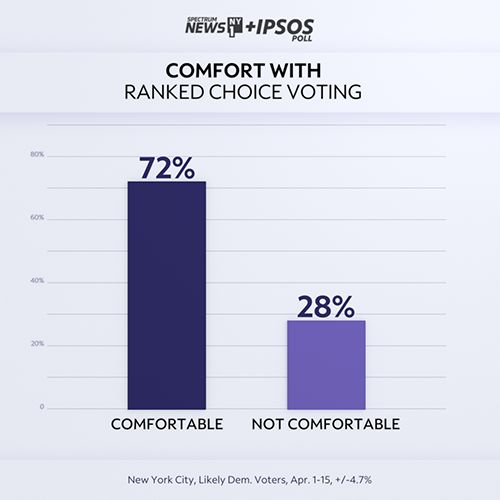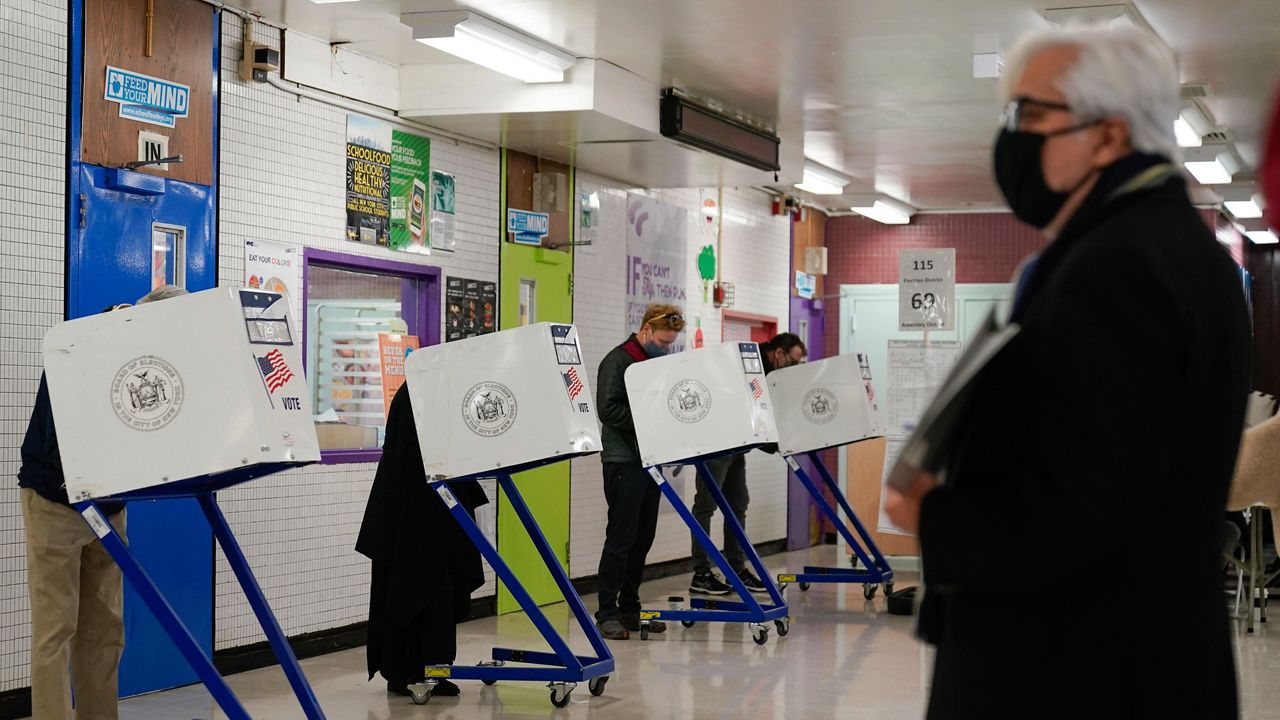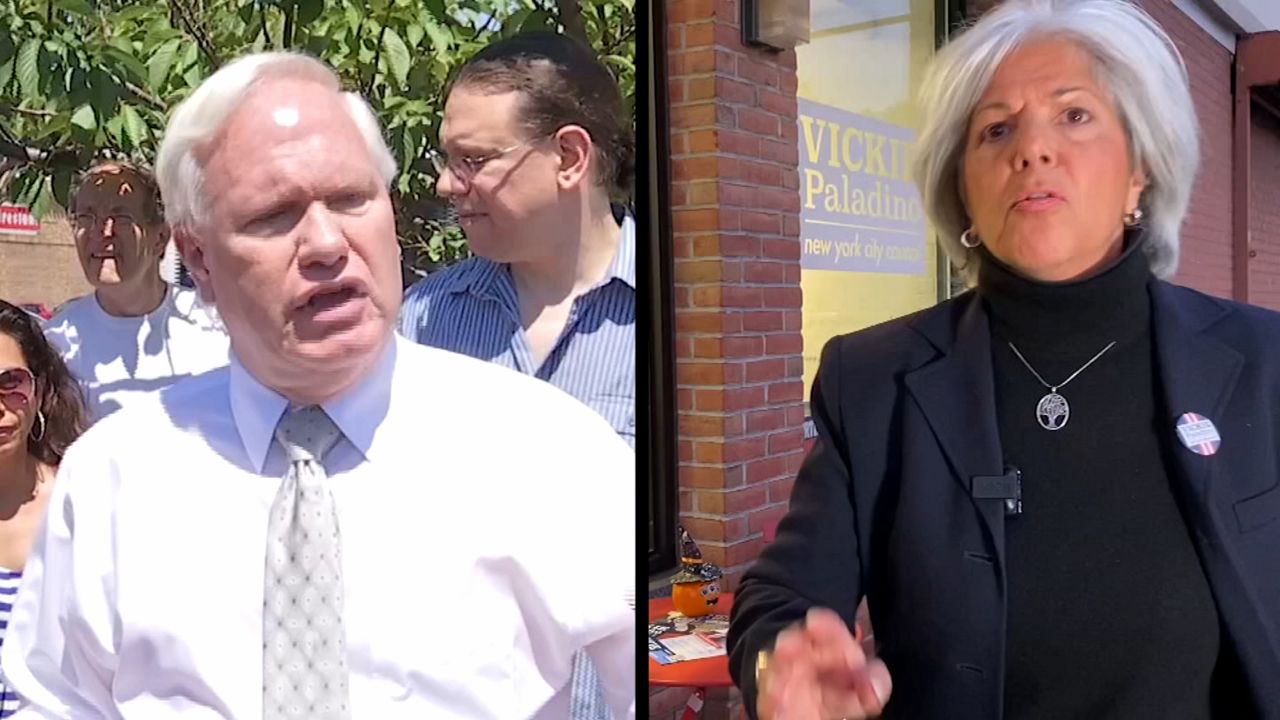It's hard enough for voters to choose a favorite in the crowded Democratic primary for mayor. But this year, for the first time, they’re also being asked to learn enough about each candidate to rank them in order of preference.
“Ranked-choice voting, this brand new system, I think throws another level of uncertainty into this mayoral race,” said Mallory Newall, research director for Ipsos, which conducted the poll in partnership with NY1.
When asked about ranked-choice voting, the poll found 83 percent of likely Democratic voters had at least heard of the system. But a much smaller subset of that group, 53 percent, described themselves as “familiar” with ranked-choice – 33 percent were somewhat familiar, and 20 percent were very familiar.

Likely Democratic voters were also asked how comfortable they are using ranked-choice. A combined 72 percent said they were either somewhat comfortable or very comfortable.

The ranked-choice tabulation only kicks in if no candidate wins more than 50 percent of the vote. First, the last-place candidate is eliminated, and his or her votes are redistributed to the second choice on each ballot. The process repeats itself until one candidate wins a majority.
The idea is that candidates must appeal to a broader electorate, since being a voter’s second choice could affect the outcome.
The good news for Andrew Yang is that not only did he get the most first-place votes in our poll, he’s also many voters’ second choice.
Susan Lerner is the executive director of Common Cause New York. She also leads the coalition Rank the Vote NYC, which polled voters in four recent City Council special elections that were the city’s first test of the system. She said the overwhelming majority of voters found the ranked-choice ballot simple to use.
“The majority of people chose to rank,” she said. “And the people who didn't rank told us they didn't rank because they didn't like anybody else other than their first choice, not because they didn't know they could rank. But rather, they made a conscious decision to vote for only one person, knowing that they had the option to vote for more."









